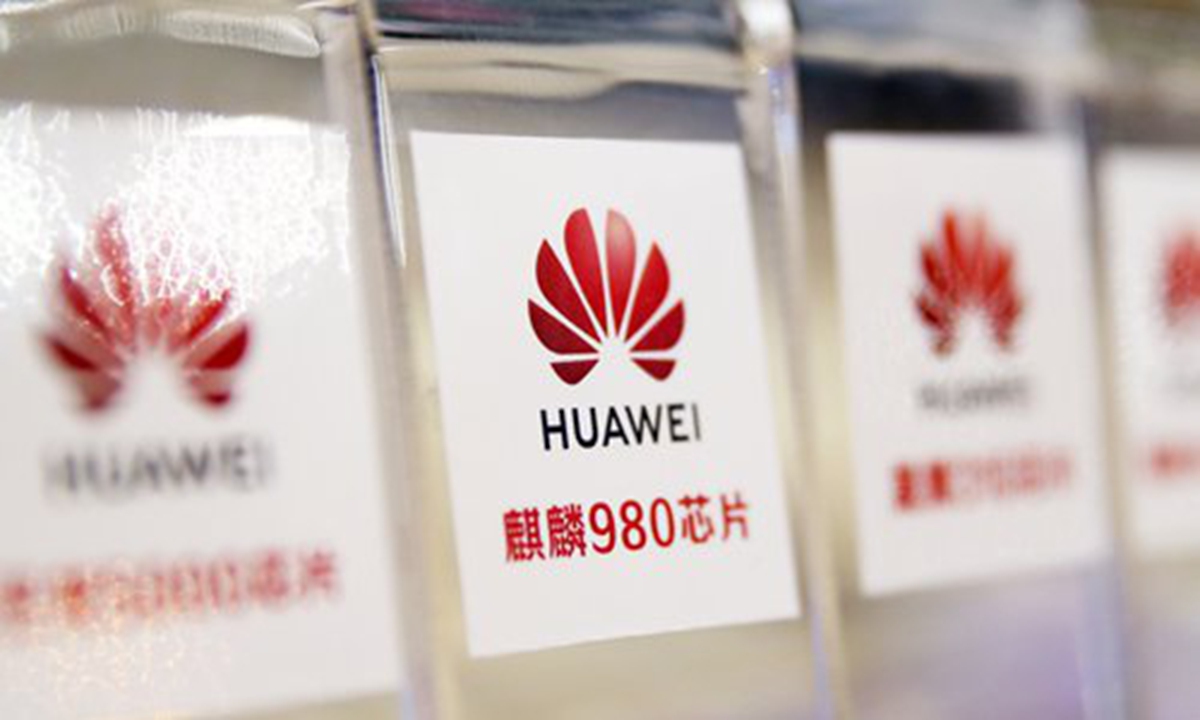No doubt China can fulfill chip self-sufficiency goal
By Xiang Ligang Source: Global Times Published: 2020/8/26 14:26:19

Huawei Kirin 980 chip Photo: IC
China has set a goal of producing 70 percent of the semiconductors it uses by 2025, and unveiled a slew of policies to help boost the domestic semiconductor industry. Skeptics have nevertheless called the goal into question due to China's current, relatively low self-sufficiency ratio. It is indeed a challenging target, which I would have found unrealistic ten years ago - but now I'm fairly confident it is doable.
The gap between China's chip industry and the world's top level products worries the Chinese people greatly, and the US continues to intensify its tightening restrictions on China, putting leading Chinese companies like Huawei in a tight spot.
Chips are currently China's largest import commodity, with an annual import value of more than $200 billion. Since the US banned companies from selling chips to us, increasing our self-sufficiency ratio has become the only way out. But in this way it is China's hardened resolve that assures me the most.
The gap is real, but analysis of why the gap exists in the first instance is more important. The chip industry was not listed as a development priority by China because the industry needed huge investment and faced fierce competition. The strategy was reasonable at the time because China's market was facing dumping issues rather than blockage issues.
However, Japan, South Korea and China's Taiwan island made different choices back then, all investing heavily in the chip industry. After decades of investment, they've all earned a position in the industry. Yet history is still ongoing - it's not too late for the Chinese mainland to make a strategy shift today.
China can continue to make great progress in the chip industry domain as long as it remains determined. In terms of chip designing, the smartphone chips produced by Huawei's HiSilicon and the base station chip produced by Sanechips have both achieved world class status. In the area of memory chips, China almost started from scratch three years ago, but has now earned a 5 percent global market share. China's gap mainly existed in wafer production.
In the past, the chip industry needed big investment and wouldn't necessarily see good returns. As China's terminal devices industries have become better developed, however, the demand for chips is an ever growing one, meaning the return on investment prospects has become promising. China's State Council has now unveiled unprecedented incentives for the industry.
Furthermore, Chinese chipmakers are seeing strong funding support. In addition to government funding, domestic chipmakers are getting a big boost from capital markets. Chinese semiconductor companies had raised roughly 144 billion yuan as of July 5 this year, reaching 2.2 times the level of the entire year of 2019 in just the first half of 2020.
Chinese terminal devices industries and consumers are increasingly confident in the domestic chip industry. Huawei's Kirin chipset has made Chinese consumers recognize the quality of its domestic chips. All in all, China can undoubtedly fulfill its chip self-sufficiency target, producing 70 percent of the semiconductors it uses in five years.
The author is chief executive of Chinese telecoms industry news website cctime.com. bizopinion@globaltimes.com.cn
Posted in: EXPERT ASSESSMENT